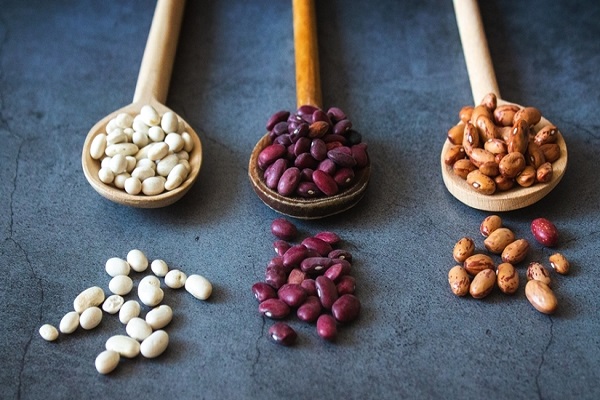
Follow us Now on Telegram ! Get daily 10 - 12 Interesting Updates. Join our Telegram Channel https://t.me/OhWomen
Download Telegram App before Joining the Channel
In the current scenario, it has become difficult to source vegetables easily. There is also fear among people about the virus and hence, the consumption of meat, fish and poultry have also greatly reduced. In such times, it has become important for us to consume the dry sources of foods in a way that they help us in providing essential nutrients in our diet.
"Pulses and legumes are a highly nutritious and sustainable food source packed with proteins, fiber, and other micronutrients such as iron and vitamin B. When paired with rice, wheat, or other cereal grains that are high in sulphur-containing amino acids, pulses' proteins can fulfil the daily essential amino acid requirements without the need for consuming animal proteins and it is an affordable plant protein source. This kind of dietary strategy is called mutual supplementation in which you combine complementary partially complete protein food to supply adequate amounts of all the essential amino acids," says Pariksha Rao Co-Founder & Chief Nutrition Officer (CNO) LIL'GOODNESS & COOLMEAL.
For example - beans and brown rice, soy curry and rice; milk and oats, curd and rice, etc.
The powerhouse of nutrients:
Pulses typically contain about twice the amount of protein found in whole grain cereals such as wheat, which for most populations in developing countries they
constitute a major source of protein. Pulses are an excellent complementary food for infants and young children to meet their daily nutritional needs. They can be incorporated into children's diets through family diets. Their high nutrient content also makes pulses ideal for vegetarians and vegans to ensure adequate intakes of protein, minerals and vitamins. When combined with food high in vitamin C, pulses' high iron content makes them a potent food for replenishing iron stores, particularly for women at reproductive age, who are more at risk for iron deficiency anaemia. Older people can also benefit from eating pulse. In today's COVID-19 pandemic, if one is not able to source fresh vegetables, add a little amla powder or a few drops of lemon juice to the bowl of your dal and enjoy with roti or rice.
Nutrient-loaded combination of pulses in your daily diet
Add a combination of pulses along with cereals (to get all the essential amino acids). Besides pulses, other sources of legumes (rajma/ kidney beans, chana/chickpeas, lobia/ black eyed peas, cowpea), green peas, soybean, etc. can also be added.
Add roasted chana/ roasted dals/ roasted soy along with seeds cocktail as a protein snack.
Besan and sattu have been an integral part of Indian cooking and perfect sources of pulse protein.
One part soy flour can be added to 3 parts of wheat flour or other cereals while making chapati dough to improve protein content of daily diet.
Pulses and legumes are a highly nutritious and sustainable food source packed with proteins, fiber, and other micronutrients.
Preety Tyagi, Lead Health Coach, Celebrity Nutritionist & Founder My22BMI shares some interesting options we can include the legumes in our daily diet.
Use daals, legumes, chickpeas, beans etc. to their maximum capacity as a source of protein, carbs as well as fiber. The whole dals are more rich in nutrient content and should certainly be consumed at least 4 days in a week.
Make use of all the high fiber grains stored in your kitchen pantries. Remember, whole grains are not only rich in Carbs, but are a great source of fiber as well. They have many other vitamins and minerals as well. They are excellent in providing us the much needed energy as well as the nourishment that we need.
Include Quinoa, Amaranth, Rajgira atta, Millets, Buckwheat flour, Sama rice in your diet. These are highly potent, dry sources of nutrition which are safe to be bought, stored and consumed during these times.
Remember, the lentils, beans, chickpeas etc. can be sprouted to enhance their nutritional benefits. Make use of this during these times of need. Make sprouted moong, sprouted kala channa, Sprouted beans etc, These can be used in preparing cheelas, chaats, salads, sauteed salads etc.
Soak the beans, chickpeas, whole lentils for a long period of time before cooking, to make them easy for your digestive system. Especially for people with gut health issues, it is advisable to soak the rajmas, chhole etc for a period of upto 24 hours, while changing water from time to time. It's very important especially during these times of sedentary lifestyle.
Eat the various nuts and seeds such as almonds, walnuts, cashew nuts, chia seeds, pumpkin seeds, flax seeds etc. These contain essential omega 3 fatty acids and are a great source of essential minerals as well. You could soak these in water as well for a few hours, to aid in easy digestion for your Gut.
Make use of all the essential nutrition rich spices we have in our kitchens. You can make a kadha using all essential spices to boost your immunity as well. Use turmeric, sauth, black pepper, and cardamom for the same reason. They are not only full of antibacterial antiseptic properties but are highly non inflammatory foods.
Source - IANS